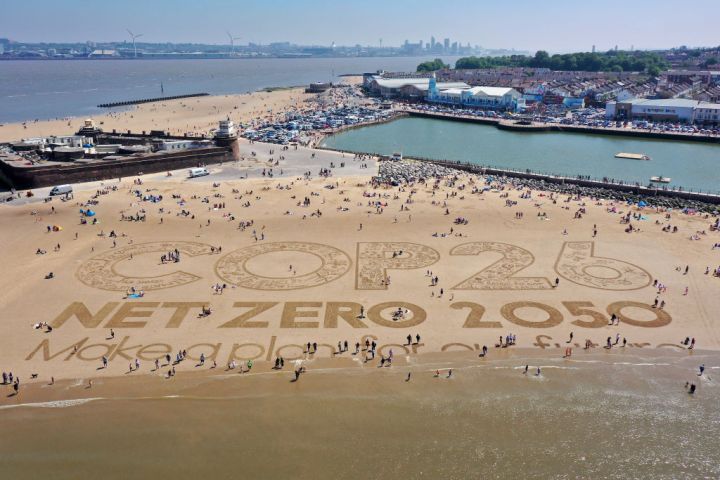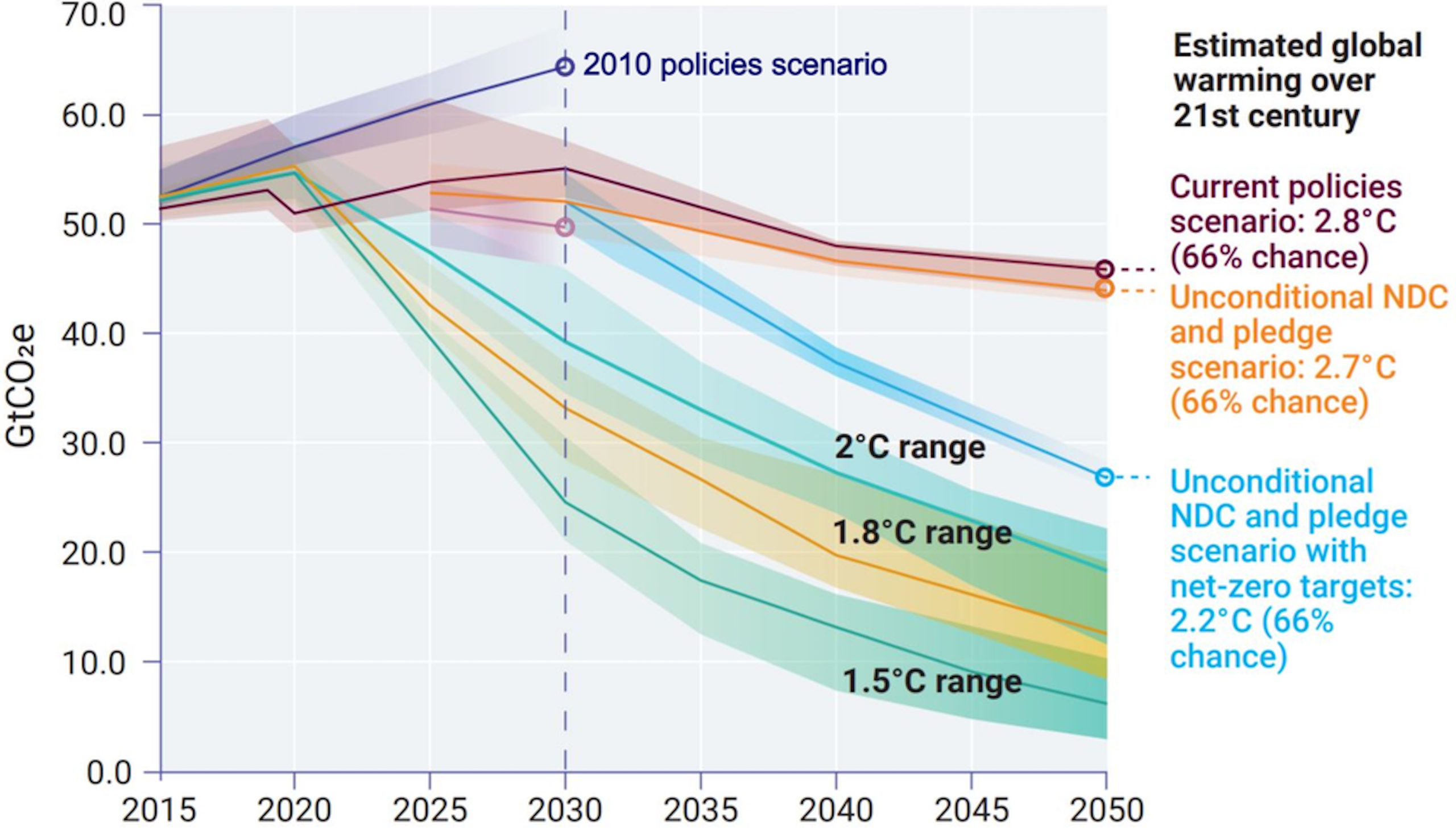THE CONVERSATION
COP26: Four key issues to watch as world leaders prepare for the Glasgow climate summit

A cross-section of the world will be at the conference, talking about pathways for reducing global carbon emissions to net zero and building greater resilience. Here are the key points.
Glasgow sits proudly on the banks of the river Clyde, once the heart of Scotland’s industrial glory and now a launchpad for its green energy transition. It’s a fitting host for the United Nations’ climate conference, COP26, where world leaders will be discussing how their countries will reduce the greenhouse gas emissions that are driving climate change.
I’ve been involved in climate negotiations for several years as a former senior UN official and will be in Glasgow for the talks starting on 31 October 2021. As negotiations get under way, here’s what to watch for.
Ambition
At the Paris climate conference in 2015, countries agreed to work to keep global warming well below 2 degrees Celsius (3.6 Fahrenheit), aiming for 1.50C (2.70F). If COP21 in Paris was the agreement on a destination, COP26 is the review of itineraries and course adjustments.
The bad news is that countries aren’t on track. They were required this year to submit new action plans – known as national determined contributions, or NDCs. The UN’s latest tally of all the revised plans submitted in advance of the Glasgow summit puts the world on a trajectory to warm 2.70C (4.860F), well into dangerous levels of climate change, by the end of this century.

All eyes are on the G-20, a group of leading world economies that together account for almost 80% of global emissions. Their annual summit takes place in Rome on 30 and 31 October, immediately before COP26 begins.
Some key G-20 countries have not submitted their updated plans yet, including India. Brazil, Mexico, Australia and Russia have filed plans that are not in line with the Paris Agreement.
Details of how China will achieve its climate goals are now emerging, and the world is poring over them to see how the country will strengthen its 2030 emissions reduction target, which currently involves cutting emissions 65% per unit of gross domestic product, moving up the date when the country’s emissions growth will peak, and setting industrial production targets for other greenhouse gases, such as methane.

A delicate dance between the US and China, and deft diplomacy by France, was critical to reaching the Paris climate agreement in 2015. Six years later, a growing rivalry threatens to spiral down what had been a race to the top.
Meanwhile the world’s eyes are on the US. Opposition from two Democratic senators, Joe Manchin of West Virginia and Kyrsten Sinema of Arizona, appears likely to force the Biden administration to scrap a plan that would have incentivised utilities to switch to cleaner power sources faster. If their planetary brinkmanship guts that key part of President Joe Biden’s Plan A for how the US will reach its 2030 emissions targets, the world will want to see details of plans B, C or D in Glasgow.
Carbon markets
One leftover task from the Paris conference is to set rules for carbon markets, particularly how countries can trade carbon credits with each other, or between a country and a private company.
Regulated carbon markets exist from the European Union to China, and voluntary markets are spurring both optimism and concern. Rules are needed to ensure that carbon markets actually drive down emissions and provide revenue for developing countries to protect their resources. Get it right and carbon markets can speed the transition to net zero. Done badly, greenwashing will undermine confidence in pledges made by governments and companies alike.
Another task is determining how countries measure and report their emissions reductions and how transparent they are with one another. This too is fundamental to beating back greenwashing.
Also, expect to see pressure for countries to come back in a year or two with better plans for reducing emissions and reports of concrete progress.
Climate finance
Underpinning progress on all issues is the question of finance.
Developing countries need help to grow green and adapt to climate change, and they are frustrated that that help has been on a slow drip feed. In 2009 and again in 2015, wealthy countries agreed to provide $100-billion a year in climate finance for developing nations by 2020, but they haven’t reached that goal yet.
With one week to go, the UK revealed a climate finance plan, brokered by Germany and Canada, that would establish a process for counting and agreeing on what counts in the $100-billion, but it will take until 2023 to reach that figure.
On the one hand it is progress, but it will feel begrudging to developing countries whose costs of adaptation now must be met as the global costs of climate impacts rise, including from heatwaves, wildfires, floods and intensifying hurricanes, cyclones and typhoons. Just as with the global vaccine roll-out, the developing world may wonder whether they are being slow-walked into a new economic divergence, where the rich will get richer and the poor poorer.

Beyond the costs of mitigation and adaptation is the question of loss and damage – the innocuous term for the harm experienced by countries that did little to contribute to climate change in the past and the responsibility of countries that brought on the climate emergency with their historic emissions. These difficult negotiations will move closer to centre stage as the losses increase.
Public climate finance provided by countries can also play another role through its potential to leverage the trillions of dollars needed to invest in transitions to clean energy and greener growth. Expect big pledges from private sources of finance – pension funds, insurance companies, banks and philanthropies – with their own net zero plans, including ending finance and investments in fossil fuel projects, and financing critical efforts to speed progress.
It’s raining pledges
A cross-section of the world will be in Glasgow for the conference, and they will be talking about pathways for reducing global carbon emissions to net zero and building greater resilience.
From emissions-free shipping to aviation, from ending coal financing to green steel and cement, from platforms to reduce methane, to nature-based solutions, the two-week conference and days leading up to it will see a steady stream of commitments and new groups of countries, non-governmental organisations and businesses working together.
Keeping track and verifying achievements toward these pledges will be critical coming away from COP26. Without that, climate activist Greta Thunberg’s “blah blah blah” speech thrown at delegates to a pre-COP meeting in Milan a few weeks ago will continue to echo around the world. DM/OBP
Rachel Kyte is Dean of the Fletcher School at Tufts University.
Disclosure statement: Rachel Kyte does not work for, consult, own shares in or receive funding from any company or organisation that would benefit from this article, and has disclosed no relevant affiliations beyond their academic appointment.
* More than 110,000 readers rely on The Conversation’s newsletter to understand the world. Sign up today.]
* This article was updated on 26 October with the release of the UNEP Emissions Gap report and trajectories chart.
[hearken id=”daily-maverick/8821″]





















 Become an Insider
Become an Insider
Comments - Please login in order to comment.